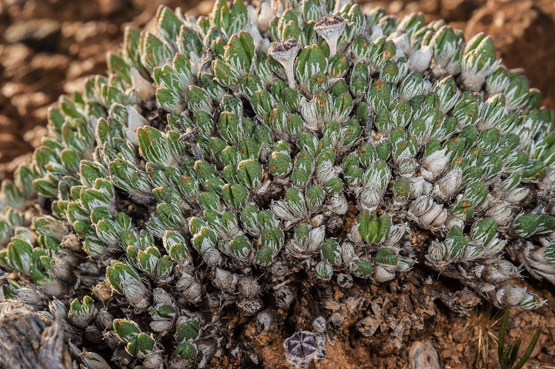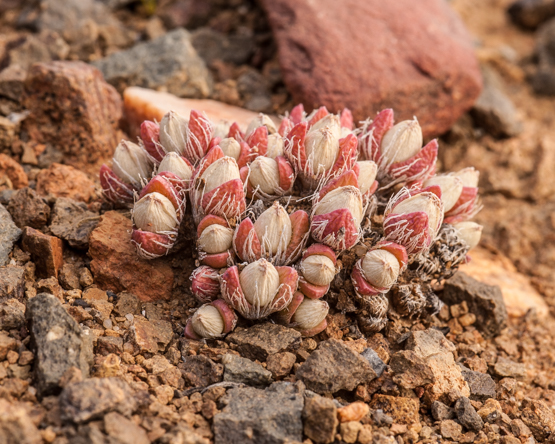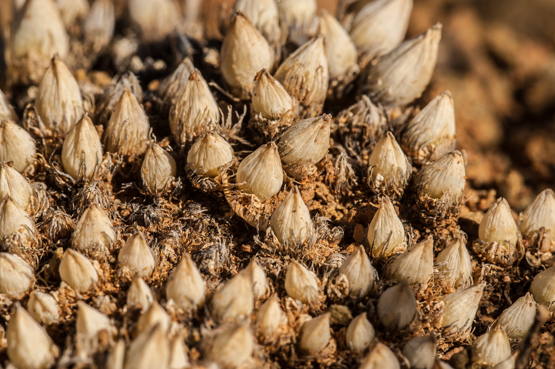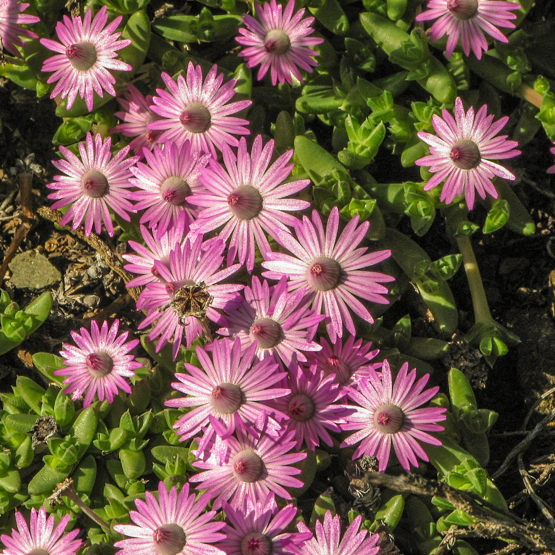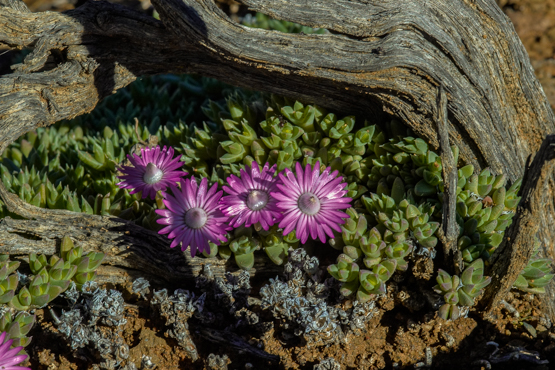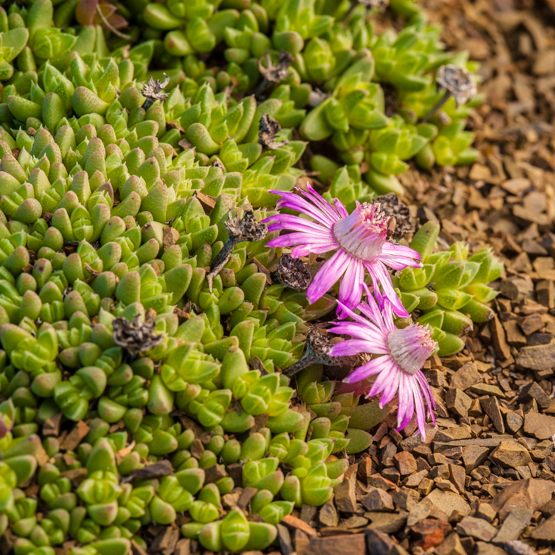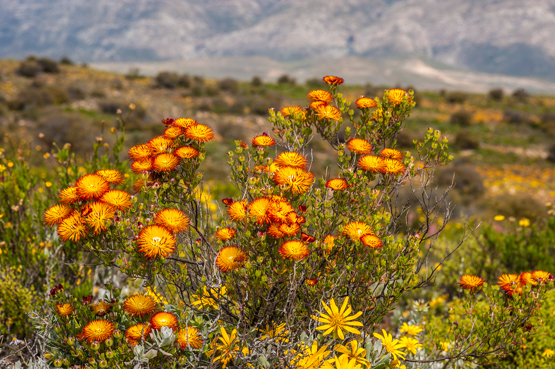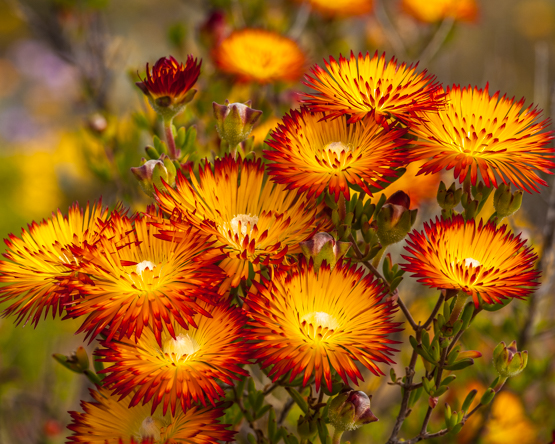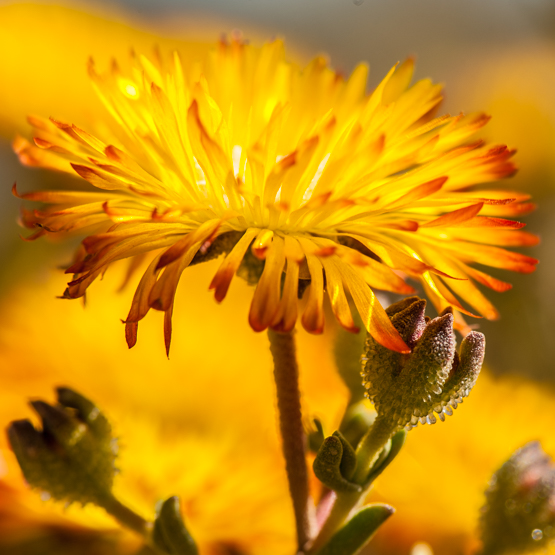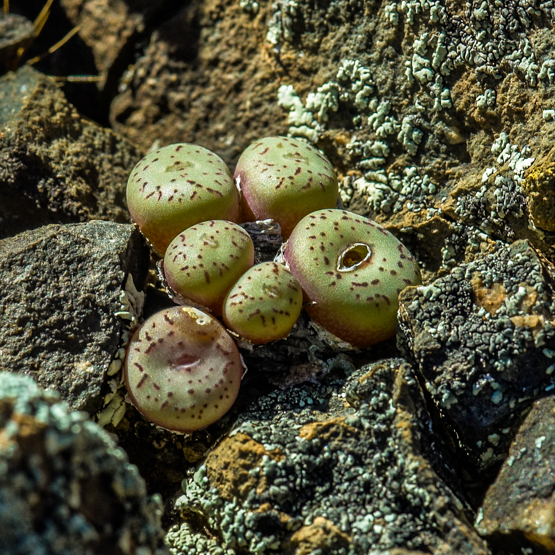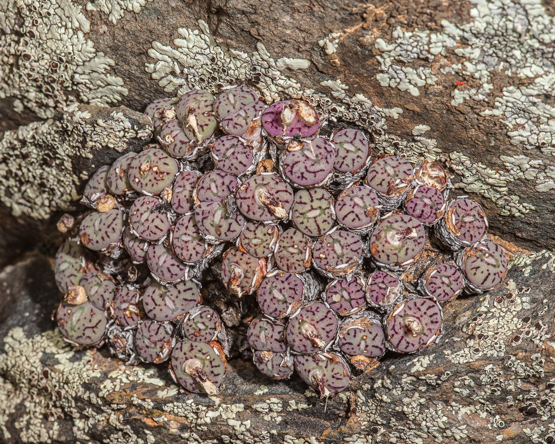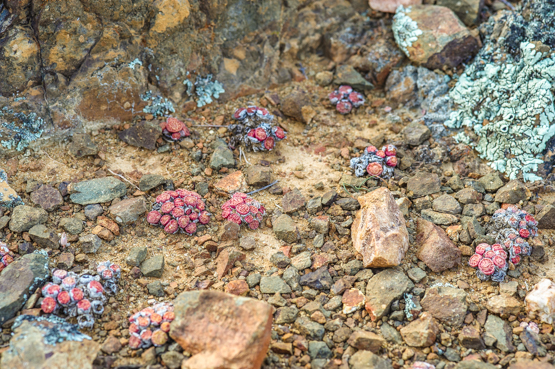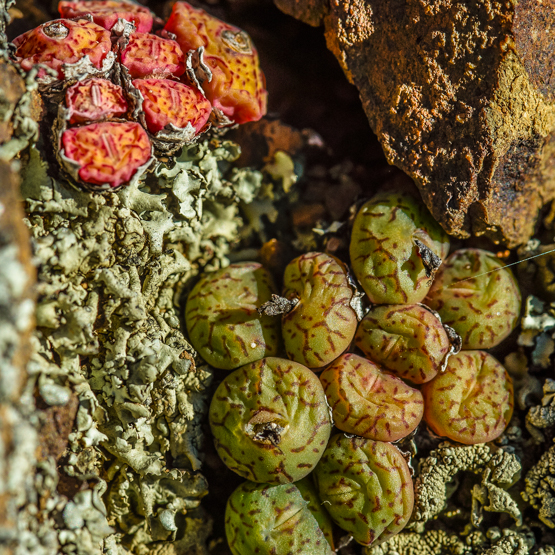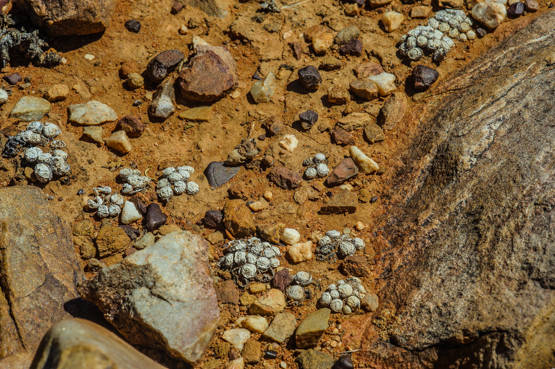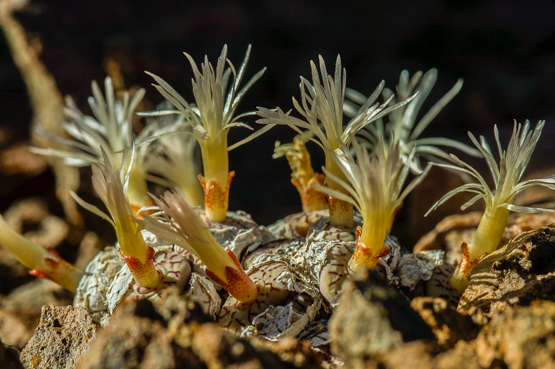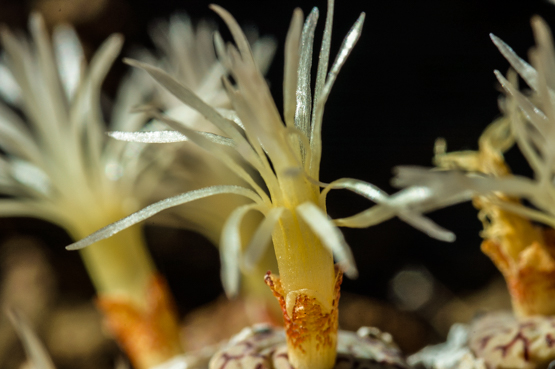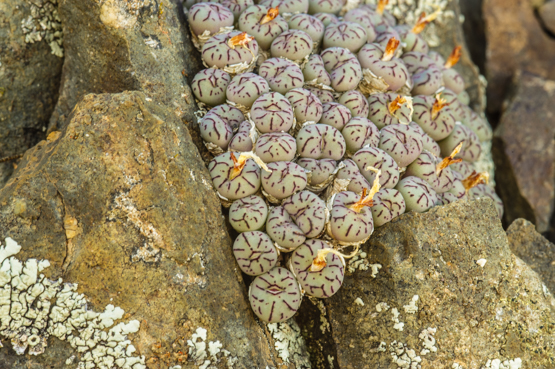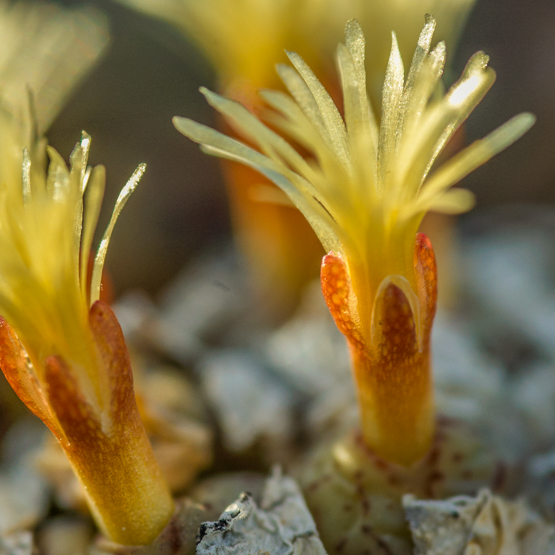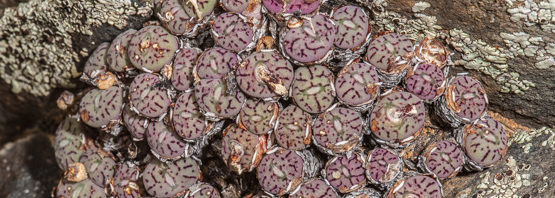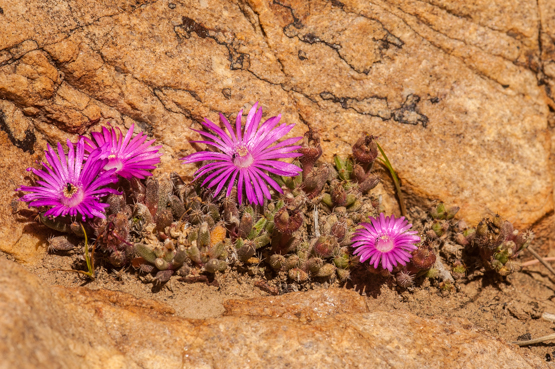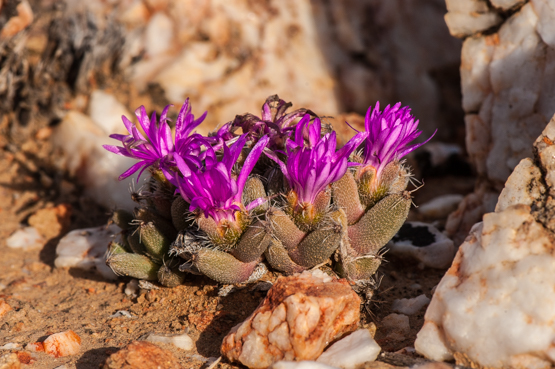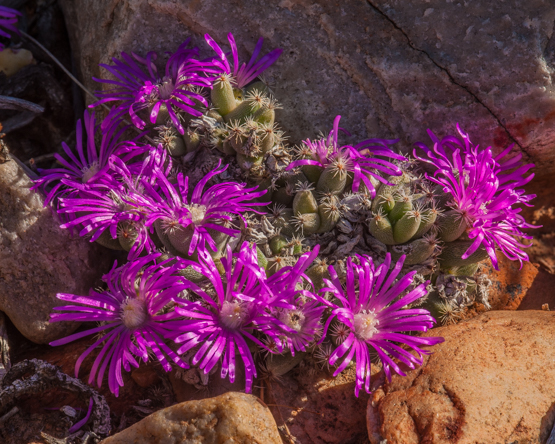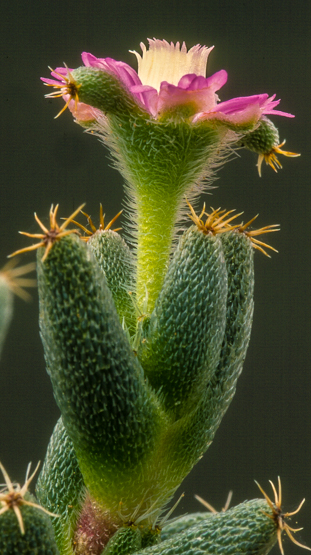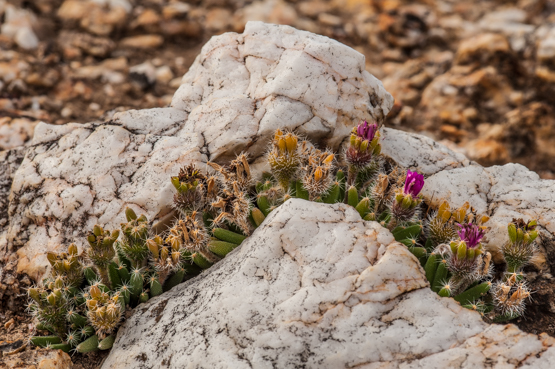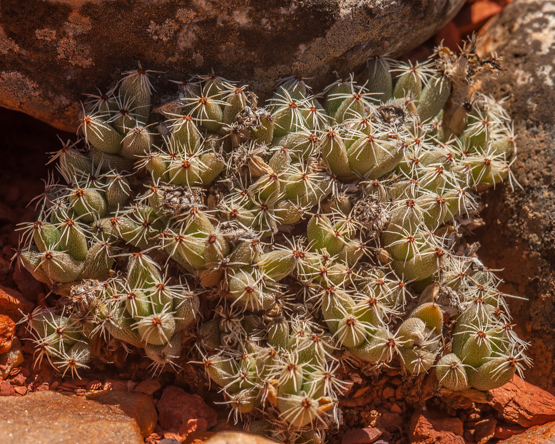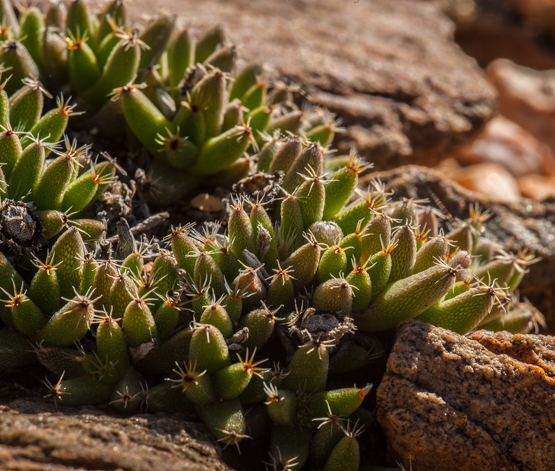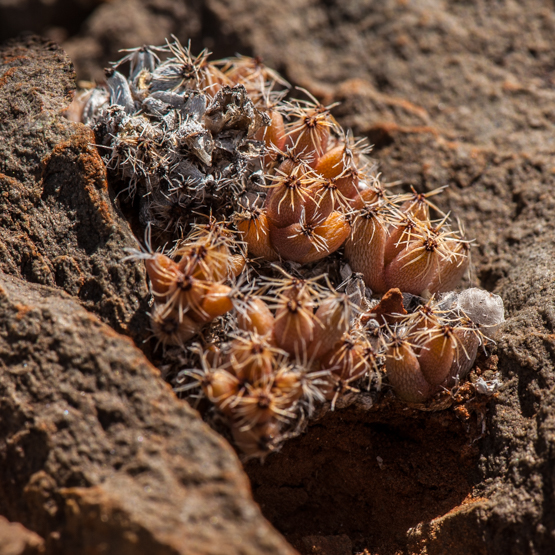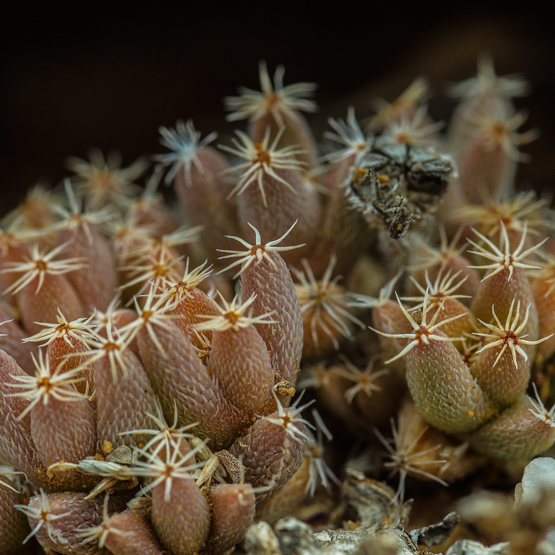It may be of interest to see what Prof. Schwantes in his magnum opus Flowering Stones and Mid-Day Flowers (1957) has to say about this “most remarkable and interesting species”: “This forms annually only two pairs of leaves to each growth which, however, are differently shaped. This phenomenon is called dimorphism of the leaf. The pair of leaves that appears at the beginning of the rainy season from out of the dry sheath is united into a long sheath at the base but developed normally above into widely separated, yawning, broad leaf tips. This pair of leaves with its comparatively broad surfaces that catch the light and absorb carbon dioxide as nourishment, provides food during the growth period. When the end of this period approaches there pushes out of the channel formed through the uniting of these normally developed leaves a peculiar, elongated, cylindrical structure which consists of two leaves joined right up to the tip. The very short ends are separated only by a slit, which shows that the growth actually consists of two thick leaves. Growths which consist of such closely united leaves are called plant bodies (corpusculum). The object of this close union can only be to reduce the evaporating surface as much as possible and to protect the young growth within from being dried up. The plant’s struggle to make the leaf pair as nearly spherical as possible is here obvious; as is known, the sphere is the form with the smallest surface area. Within these leaf pairs or plant bodies the next pair develops, which once more is less completely united. Inside the body a channel running its whole length remains open; the slowly developing leaf pair is fitted into this and draws from the plant body food and water until it has dried up to a parchment-like skin which completely surrounds the young pair so that not even the tip projects. In this condition the growth, well protected by the skin, lives through the dry period and when the rains begin the deeply buried pair of leaves quickly emerges from the skin surrounding it. In Ruschia pygmaea quite distinct leaf pairs are produced for the dry and for the rainy seasons, one of which has a large surface for assimilation, while the other serves for the protection of the resting pair.”
Tag: Aizoaceae (Mesembryanthemaceae)
Antimima pygmaea (part 1 of 2)
There are not many plants that look better or more interesting in the resting state than during active growth, but this species is certainly one of them.
The plants form low, densely branched mats to 15 cm in diameter.
The leaf pairs are dimorphic. One pair is almost fused almost completely, to 5 mm tall and 3 mm wide, developing into a conical body which turns into a dry sheath protecting the subsequent leaf pair during the dry period. These white bodies become slashed with time and are typical for the species.
The plants occur on shaly slopes in a smallish area between Worcester and Laingsburg.
Irrespective of the statement in the first sentence of this post, the plants are quite cute when in flower. The flowers are up to 18 mm across and appear in winter (July-August).
Drosanthemum bicolor
Drosanthemum bicolor
Conophytum minimum (part 3 of 3)
Conophytum minimum (part 3 of 3)
Conophytum minimum (part 2 of 3)
Conophytum minimum (part 1 of 3)
When Adrian Haworth described Conophytum minimum in 1795, it was the smallest known member of the genus Mesembryanthemum (as it was back then). Hence the specific epithet.
It is a member of the section Conophytum – “The original cones and dumplings” as Steven Hammer calls them. As in other members of this section, plants of C. minimum may vary from quite plain and dull to exquisitely marked. This variability has given rise to a long list of synonyms (26 to be exact).
The plants form rather loose mats or compact domes.
The individual bodies are conical to cylindrical, 8-15 (sometimes up to 20) mm long and 10 mm thick, elliptical in outline and with their tops usually truncate (as if cut off). They range in colour from pale green to greyish green and the tops are mottled in various degrees with dark lines and spots.
The flowers are white, pale yellow or pale pink and strongly scented. They appear in autumn (May, June). Although they are described as nocturnal, on cold days they are often open in the morning (up to 10 or 11 am) or late afternoon.
When you want to see the plants in the wild, your best chances are in the Matjiesfontein, Laingsburg, Witteberg area, where they are often locally abundant on shale, sandstone or quartzitic rocks among lichens, often finding shelter in crevices.
The photos in this post and the following two ones, are arranged chronologically so as to give you an idea what the plants look like in different times of the year.
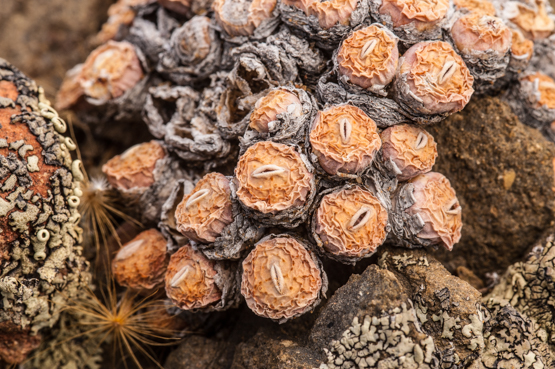
Picture taken 29 Jan. 2012
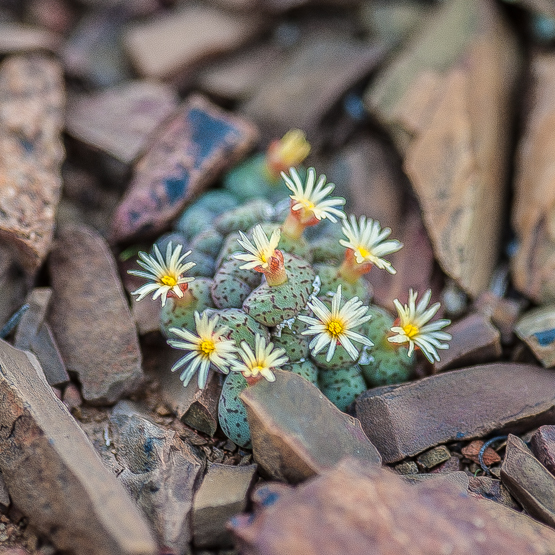
Pictures taken 6 May 2009, around 5.40 PM
Trichodiadema marlothii (part 2 of 2)
Trichodiadema marlothii (part 1 of 2)
In the Montagu area and further to the east and northeast, this species is rather common on quartz patches, in rock crevices and in other stony places. In spite of that, one does not often find it mentioned in the literature.
The species belongs to the group of nicely compact Trichodiademas, of which T. densum is the best known. In the wild, the plants get no taller than 4 cm.
The leaves are beautifully covered in big bladder cells with long points at the tip.
In the description it says that the diadem has 5-10 bristles, but in all the plants I have seen there are about twice as much.
The flowering period is from May through August.
This species can be distinguished from similar ones by the fact that the fruits have 6 compartment, rather than the usual 5.
